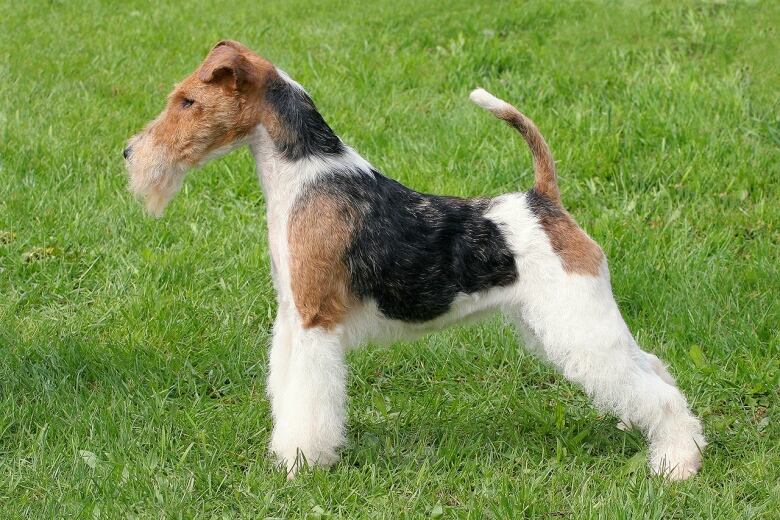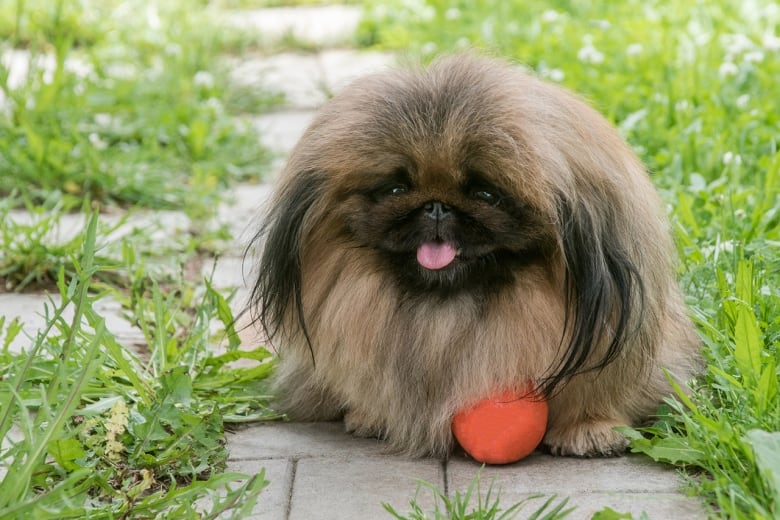Why these dog breeds have their oh-so-specific special traits
For instance, ears that actually help one breed smell!

It's fairly common knowledge that basset hounds have a great sense of smell, that whippets can run like the wind and that Labrador retrievers can swim like Penny Oleksiak. Dogs have been adapted over hundreds of years to do certain things well, but just what is it that's giving your dog's breed that competitive edge? We spoke to Richard Paquette, Canadian Kennel Club director and all-breed dog show judge, to tell us about eight popular breeds and their unique physical traits.
Labrador retriever

We all know someone with a goofy, happy Labrador retriever in the house. They make lovely companions, and, as their name suggests, they're also really good at retrieving things. Labs are part of the breed grouping known as hunting dogs. Contrary to what you might think about your lazy couch potato, these dogs are designed to work really hard. The Newfoundland dog is a strongly built muscular dog used on fishing boats to help haul in nets," says Paquette. "A smaller, versatile retriever dog was also developed. This became the Labrador Retriever. They have really thick, water-resistant double coats that keep them dry and protect them from hypothermia. And that tail? "It's used as a rudder. A Lab's long, strong thick tail helps guide the dog through the water on his way to pick up prey," says Paquette. By far the most interesting feature on a Lab is that it actually has webbed feet. The webbing helps Fido powerfully push through the water so that he can get out to the quarry and back again as quickly as possible.
Basset hound

If you ever get the chance to meet a basset hound in real life, it's not something you'll soon forget. But their unique appearance isn't just there to melt your heart. The basset is part of the hound group (more specifically, scent hounds), and it's built to expertly sniff out prey. By keeping its long, powerful nose glued to the ground, it can find the scent trail of almost any kind of creature out there. And those ears? They actually help to prevent the smell from escaping by keeping it concentrated around the front of the dog's face! As if that wasn't cool enough, the dog's legs keep it so low to the ground that it doesn't have to work very hard to find the scent. The basset hound's tail also typically comes equipped with a white tip. Paquette explains that has historically acted as a flag for hunters, keeping the hound visible for miles while it ran ahead to chase down a scent. And of course, we can't forget that distinctive howl or "bay." Because hounds were often miles ahead of the hunters, they needed a distinct, and really loud, call to let the hunters know when they found something.
Whippet

The whippet sort of looks like a smaller version of a greyhound. These little guys are also part of the hound group, but they hunt by sight instead of smell. Their eyes are almond-shaped — unlike the much rounder eyes of their canine cousins — and set on the sides of their heads to give them better peripheral vision for spotting prey. Of course, once they've sighted the vermin, they need to be able to catch it, right? That's why this dog's entire muscular and skeletal structure is built for speed. The whippet's rib cage is deep and narrow to accommodate large lungs and a large heart. Paquette adds that its front legs are "bladed," which means they're pointed instead of rounded, to enhance aerodynamics.
Siberian husky

Siberian huskies have made their way into the living rooms of adoring fans everywhere, but of course, they haven't always stayed inside. Part of the working dog group, huskies have long fulfilled the role of "cart dog," carrying loads over great distances before there were golf carts and ATVs to do it for us. Their physical makeup — being slightly longer than they are tall — makes them perfectly suited to pulling sleds over difficult terrain, and it also helps them endure their native northern climate. Being out in the cold in the Far North is no joke, but if you've ever seen a husky outside in a snowstorm, you've seen how much they love it. Siberian huskies have a double coat that consists of a thick outer coat to resist moisture, wind and snow, and a soft pile underneath to keep them toasty. Paquette tells us that their fluffy tails aren't just for decoration either: when sled dogs sleep outside, they cover their faces with their tails while they curl up tight to stay warm. Even their long, slender noses contribute to a huskies' warmth by making sure that the air is warmed before it hits their lungs.
Wire fox terrier

The terrier group means business. These breeds have a serious drive to catch tiny, fast-moving animals, making them a rat's worst nightmare. The wire fox terrier is particularly well suited for catching vermin, says Paquette, thanks to a rough coat that acts like a "suit of armour" — not even tiny rodent teeth can puncture it. Its long, narrow body also allows the wire fox terrier to reach into burrows and small spaces, while a "punishing bite" makes it easy for the breed to grab and kill its prey.
Pekingese

Some dogs' most important job is to bring a little joy into our lives. The Pekingese is part of the toy dog group and originated in the palaces of the Forbidden City in Peking, now Beijing, China. From the very beginning, their one and only purpose was to hang out with royalty and look dignified while doing it. The eyes of the Pekingese are really large and round, almost mimicking human eyes, and its long, lustrous coat is just downright nice to touch. In terms of physical prowess, this dog isn't going to win any contests, but Paquette says that the royals actually preferred the Pekingese to be less agile to prevent it from running away and make it more reliant on its owners.
Poodles

Poodles belong to the non-sporting group, which basically means they can't be easily categorized. Paquette says that poodles are one of the most intelligent breeds and have historically been used as water retrievers. And that fancy haircut that everyone loves to laugh at? It actually served a very important purpose. According to Paquette, tufts of hair were placed strategically to keep the dog's organs warm, while the rest of the body was trimmed to keep the dog light in the water. Common spots for a tuft would be on the back (to protect the kidneys), around the rib cage (to protect the lungs and heart) and on the head (to prevent heat from escaping). The hair around the ankles, also known as "bracelets," keep joints warm, but were also designed "to make poodles' legs mimic paddles and better propel the dogs through water," says Paquette.
German shepherd

German shepherds are one of the most versatile, hardworking breeds around. And while they currently work with police, bomb detection squads, avalanche rescue teams and more, these dogs were originally bred in Germany to herd and protect flocks of sheep. Their large, pricked ears are designed to locate the sound of predators from miles away. That slight slope to the back, which is now so recognizable in the breed, makes the German shepherd a good "trotter," too, says Paquette. That means that they can easily keep up with a human shepherd and his flock for days on end without tiring.
Danielle Hodges is a Certified Professional Dog Trainer (CPDT-KA) and a Licensed Family Paws Parent Educator for dog, baby and toddler safety. She is co-owner of Follow the Leader Inc Dog Training School with locations in Toronto and Hamilton, Ont.